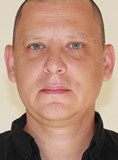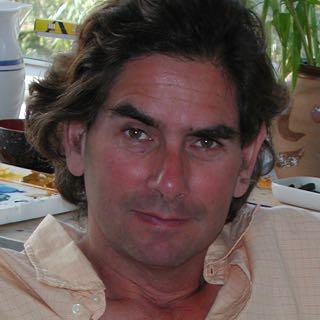|
THE SCIENCE OF CONSCIOUSNESS CONFERENCE April 25-30, 2016 - Tucson Tuesday, April 26, 9 am-1 pm Pre-Conference Workshop
QUANTUM AI AND MACHINE CONSCIOUSNESS Hartmut Neven, Christian Szegedy, James Tagg, Marcus Abundis
Quantum Artificial Intelligence and Consciousness Hartmut Neven Hartmut Neven PhD is Director of Engineering and the Quantum AI Lab at Google. Having studied under Valentino Braitenberg and Christoph van der Malsburg, Hartmut started companies for facial recognition and visual search which were acquired by Google where he has managed visual search projects, Google Goggles and the Google Glass. In 2006 Neven began to explore quantum computing for combinatorial problems in machine learning, and in collaboration with D-Wave Systems developed the first image recognition and binary classifier based on quantum computing.
Convolutional Neural Networks and How They Might Relate to Consciousness Christian Szegedy
Christian Szegedy PhD is a researcher at Google working on machine learning and computer vision. He pioneered a new form of ‘convolutional’ neural network architecture initially called ‘Inception’ with hidden, deeper layers of low-cost ‘local’ computation. Christian’s convolutional networks have been likened to deeper level processing proposed in hierarchical brain models, e.g. possibly analogous to computations performed by small groups of tightly coupled neurons, or intra-neuronal computation. His convolutional networks served as the basis for ideas in the film ‘Inception’ in which dreams are embedded into each other. Its internal representation was later visualized by the ‘DeepDream’ work of Alexander Mordvintsev at Google. In DeepDream, deeper layers of seemingly exotic processing may be up-regulated to become integrated into more mundane superficial levels, leading to bizarre amalgamations and context compared not only to dreams, but psychedelic experiences. In this workshop Christian will discuss state of the art neural networks, DeepDream, and how both might relate to the question of consciousness.
DeepDream “Toast sandwich”
Can a Computer be Conscious Through Computation Alone? James Tagg James Tagg is a computer scientist, physicist and inventor. He has many patents in the field of human-computer interaction, most notably touchscreen technology and is founder of Truphone, a London based mobile telecommunications company. James’ talk will begin with the 1989 book The Emperors New Mind by Sir Roger Penrose which argued that conscious understanding requires a non-computational, i.e. non-algorithmic, explanation. Penrose cited ‘Fermat’s last theorem’ as an example of a single problem of infinite nature that is not susceptible to brute force algorithmic solution. At the time of writing it was not known whether this problem was non-computable nor if it could be solved. In 1982 Yuri Matiyasevich showed it was non-computable and 1995 Andrew Wiles proved Fermat’s last theorem, resulting in a paradox. For those who believe the human mind is a computer Wiles had just solved a provably non-computable problem. The paradox is much contested. Arguments are put forth that only general-purpose computers are forbidden from solving any problem and that humans are special-purpose computers solving a specific problem or, alternatively that computers are only forbidden from giving precise answers but approximations are permitted. Tagg will address the concept of non-computability, analyze and refute counter arguments to the Wiles Paradox, and discuss implications for progress in Artificial Intelligence. If non-computability is a significant factor, what are the broader implications on physics and cosmology? James Tagg is a computer scientist, physicist and inventor. He has many patents in the field of human-computer interaction, most notably touchscreen technology and is founder of Truphone, a London based mobile telecommunications company.
Consciousness and Information Theory Marcus Abundis Marcus Abundis is a high-tech professional experienced in robotics, early hedge funds, data encryption, medical technology, and complex computer networks. He managed the European market for a critical technology in the Internet explosion, and later consulted at Stanford Graduate School of Business. Marcus covers development of information based models of human consciousness. He begins by discussing classic information theory, and then moves on to current informational issues and models, and the likely advent of creative machine intelligence (e.g., IBM Watson, Wolfram|Alpha). First, Shannon information theory (IT) and its benefits are introduced. Second, “Shannon’s gap” is shown as a result of classically excluded informational facets, akin to Chalmers’s Hard Problem. Third, practical methods of how this “gap” can be addressed in IT is covered. From that IT foundation, four models are then explored: 1) Tononi’s Integrated Information Theory (IIT), a network model, is detailed from a Shannon perspective. 2) Penrose-Hameroff Orch-OR is discussed as a neurological quantum model, with fractal and holographic aspects. 3) Terrence Deacon’s teleodynamics, based on entropic interference, is covered. 4) the author’s general information theory (GIT), as a functionalist view, is introduced. A brief comparative analysis of strengths and weaknesses for each approach is given. In conclusion, Marcus will present limits and future opportunities for informational modeling, augmented human reality and, strong artificial intelligence.
To Register for this workshop https://eagle.sbs.arizona.edu/sc/
Early Workshop Fees: TSC General Registrants $60 half day TSC Student Registrants $40 half day General Public - Workshop only $125 half day General Public - Student - Workshop only $75 half day
|
|
|||||||||||||




